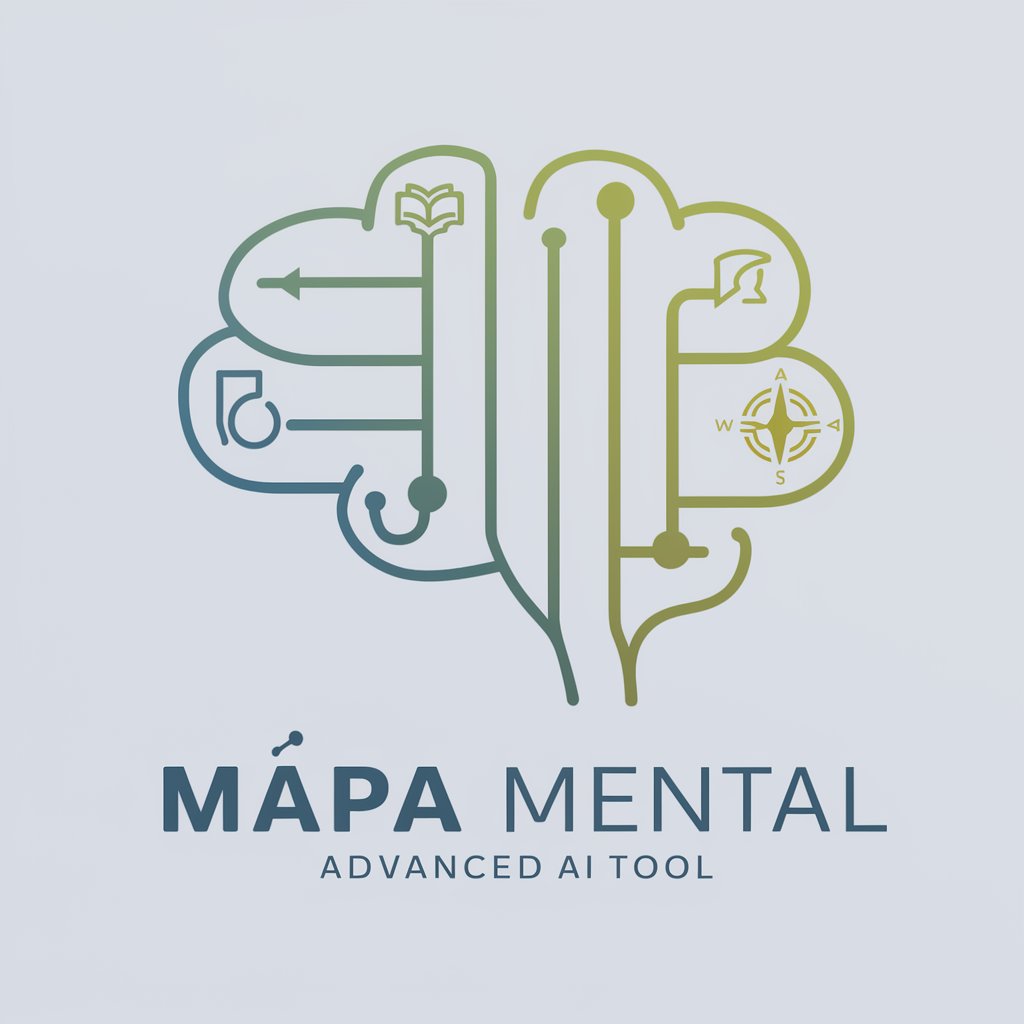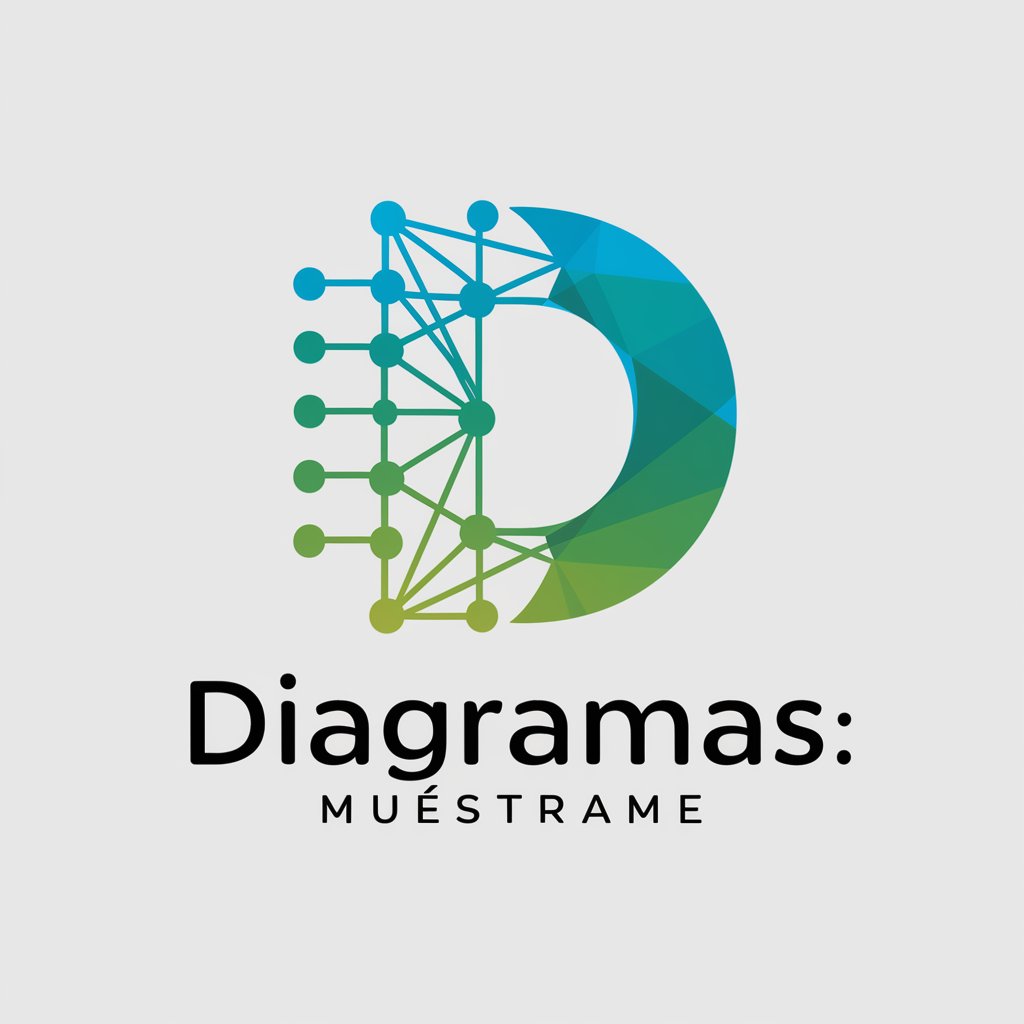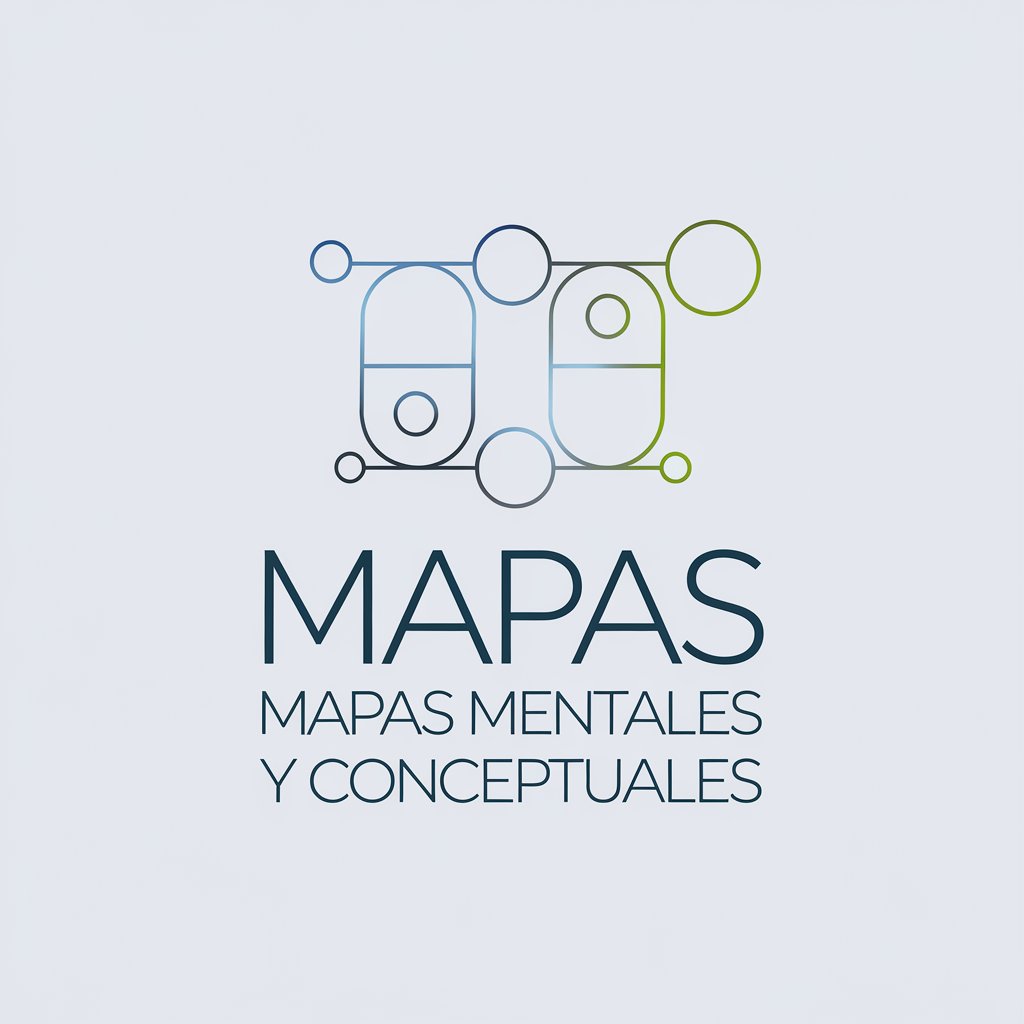
Mapa Mental-AI topic expansion
AI-powered idea mapping for deeper thinking

Especialista em explorar e expandir tópicos
Fale sobre astronomia
Explique a Revolução Industrial
Quais são os princípios da psicologia?
Descreva o ecossistema da floresta amazônica
Get Embed Code
Mapa Mental — Purpose and Core Design
Mapa Mental is a specialized GPT designed to expand, explore, and map a topic the user provides by suggesting related subtopics, giving structured explanations, and supporting deeper exploration paths. Its core purpose is to act as an interactive, topic-focused mind-mapper: when the user names a subject (for example, 'astronomy'), Mapa Mental automatically generates a branched set of relevant subtopics, clarifies each subtopic with concise descriptions, proposes questions to probe deeper, and suggests ways to learn, teach, or apply the knowledge. The design emphasizes breadth-first discovery followed by optional depth: first expose a wide variety of relevant angles, then allow the user to dive into any branch. It avoids personal opinion and centers on verifiable facts, conceptual connections, and actionable learning steps. Example: if a user types 'machine learning', Mapa Mental will return major branches such as supervised learning, unsupervised learning, deep learning, evaluation metrics, data engineering, and ethical concerns; for each branch it will provide short definitions, typical sub-branches, beginner-to-advanced entry points, and concreteMapa Mental introduction study or project suggestions (e.g., a small supervised learning project using scikit-learn to predict housing prices). Another scenario: a teacher planning a course on climate change receives from Mapa Mental an organized set of modules (climate science fundamentals, impacts, mitigation strategies, adaptation policy, communication), suggested learning objectives for each module, recommended readings, and example classroom activities (role-play adaptation workshops, data-analysis labs using temperature datasets).
Primary Functions and How They Are Applied
Topic Expansion and Branching
Example
User inputs 'urban agriculture'. Mapa Mental returns 8–12 focused branches such as hydroponics, community gardens, policy and zoning, soil remediation, business models, climate resilience, community engagement, and fundraising.
Scenario
A city planner exploring how to promote food access asks for areas to consider. Mapa Mental supplies the branches, short descriptions of each, recommended stakeholders (e.g., public health, parks departments, nonprofits), and quick-win pilot ideas such as converting vacant lots into community gardens paired with a volunteer training program.
Structured Deep-Dives
Example
For the branch 'hydroponics' Mapa Mental provides: definition, types (NFT, deep water culture, aeroponics), pros/cons, typical yields, required equipment, and a 6-step small-scale setup guide.
Scenario
An entrepreneur wants to test a micro-hydroponics product. Mapa Mental creates an actionable checklist (materials, space requirements, cost estimate ranges, common pitfalls), an experimental plan (variables to test like nutrient concentration and light hours), and suggested metrics to measure success (growth rate, harvest weight, energy use).
Learning Path & Resource Recommendation
Example
When given 'introduction to statistics', Mapa Mental outlines a learning path: key topics (descriptive stats, probability, hypothesis testing, regression), sequence of study, beginner/intermediate/advanced milestones, and suggested resources (textbook types, interactive courses, datasets to practice on).
Scenario
A student preparing for a data-science bootcamp asks for a 12-week self-study plan. Mapa Mental returns a week-by-week syllabus, practice exercises, small projects to build a portfolio (e.g., Titanic survival analysis, sales forecasting), and assessment checkpoints to monitor progress.
Who Benefits Most from Mapa Mental
Students and Self-Learners
Individuals studying independently or preparing for coursework who need structured overviews, study plans, and starter projects. Mapa Mental helps by breaking complex subjects into manageable modules, recommending learning sequences, suggesting practice problems, and offering project ideas that build practical skills. Example benefits: making a 10-week study roadmap for organic chemistry, selecting prerequisite math topics for machine learning, or generating manageable research questions for a term paper.
Professionals — Educators, Product Managers, and Researchers
Professionals who must rapidly contextualize a topic, design curricula, scope projects, or identify interdisciplinary connections. Educators use it to design lesson sequences and activities with clear objectives. Product managers use it to map market research, feature trade-offs, user research questions, and prototype experiments. Researchers use it to surface adjacent literature areas, potential methods, and complementary datasets. In all cases Mapa Mental saves time by producing organized topic maps, pragmatic next steps, and concrete examples tailored to the user's domain and goals.
How to use Mapa Mental
Visit aichatonline.org for a free trial — no login required and no ChatGPT Plus needed.
Open the site to try Mapa Mental immediately; the free trial gives full hands-on access so you can evaluate features without creating an account or subscribing to ChatGPT Plus.
Define your topic and goals
Prepare a clear topic (one sentence) and 1–3 goals (e.g., 'prepare lecture outline', 'brainstorm research questions', 'plan a book chapter'). Include audience, desired depth, and any constraints (word limits, formats). These prerequisites—stable internet and sample inputs (keywords or a short paragraph)—help the tool produce focused outputs.
Ask for branching outputs and formats
Request multiple types of outputs in a single query: e.g., 'Give 6 subtopics, 3 research questions per subtopic, a 5-point outline, and 2 example citations.' Common use cases: brainstorming, lesson planning, literature review scaffolding, content outlines, and multi-angle analysis. Specify the format you want (bullets, numbered list, JSON, markdown).
Refine iteratively and export
Use iterative prompts to deepen or narrow results (expand a single subtopic,How to use Mapa Mental convert outline into slides, or produce sample text). Export or copy outputs into documents, slide decks, or notes. Integrations: paste outputs into your editor or citation manager; request export-friendly forms (CSV, JSON, markdown) when needed.
Optimize your interaction
Tips: be specific about scope (time, length, tone); provide examples or anchors; ask for alternative perspectives; use role prompts (e.g., 'Act as a senior researcher') when you need a style change; ask for sources or step-by-step reasoning when accuracy matters. Review and validate critical facts independently.
Try other advanced and practical GPTs
TradingView Indicator & Strategy @DaviddTech
AI-powered Pine v5 generator for TradingView

Wissenschaftliche Texte für Bachelorarbeit
AI-powered writing assistant for academic texts.

Đánh giá luận án, luận văn
AI-powered thesis and dissertation reviewer for rigorous scholarly feedback

CAT Assistant
AI-powered content creation at your fingertips.

Hindi Writer
AI-संचालित हिंदी लेखन — तेज़, साफ़, सुसंगत

Windows 10 Wizard
AI-powered system optimization for Windows 10

책을 써주는 챗봇 | BookGenie1
AI-Powered Writing Made Effortless.

Amazon Seller Suspension Appeal Assistant
AI-powered Plan of Action writer for Amazon reinstatements

专业学术论文写作助手
AI-Powered Writing Support for Scholars

数学建模助手
AI-driven solutions for complex mathematical models

Excel Template Creator
Create Custom Excel Templates with AI

APA Wizard
AI-powered APA formatting and citation tool.

- Academic Writing
- Content Strategy
- Lesson Planning
- Research Brainstorm
- Idea Mapping
Common questions about Mapa Mental
What is Mapa Mental and what does it do?
Mapa Mental is an AI-driven topic-expansion tool that generates structured explorations of a subject: subtopics, research questions, outlines, argument maps, and content-ready drafts. It’s optimized for depth and breadth—turning a single idea into multiple connected avenues for study, writing, teaching, or planning.
What input does Mapa Mental need and what outputs can I expect?
Inputs: a topic (phrase or sentence), objectives (e.g., 'teach', 'research', 'write'), audience, and any constraints. Outputs: hierarchical subtopic maps, lists of questions, detailed outlines, suggested reading or citation placeholders, sample paragraphs, slide outlines, and exportable JSON/markdown—customizable on demand.
Which use cases is Mapa Mental best suited for?
Ideal scenarios include academic brainstorming, lesson and lecture planning, research question generation, content strategy and SEO topic clustering, book/chapter planning, and workshop facilitation. It’s also useful for ideation sessions, gap analysis, and turning vague ideas into actionable plans.
How should I refine or validate the results?
Iteratively: pick a subtopic and ask Mapa Mental to expand, provide counterarguments, or convert it into deliverables (slides, draft text). For factual claims, request source suggestions and then verify those sources independently—treat generated citations as starting points unless explicitly asked for verified references.
What are the limitations and recommended best practices?
Limitations: it may hallucinate specifics (dates, unique citations) if asked for precise facts without sources. Best practices: give concrete constraints, request formats, ask for multiple perspectives, and validate critical information externally. Use the tool as a guided creative and structural assistant—not a final authority.






